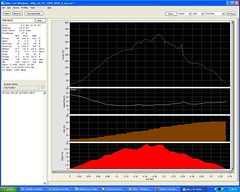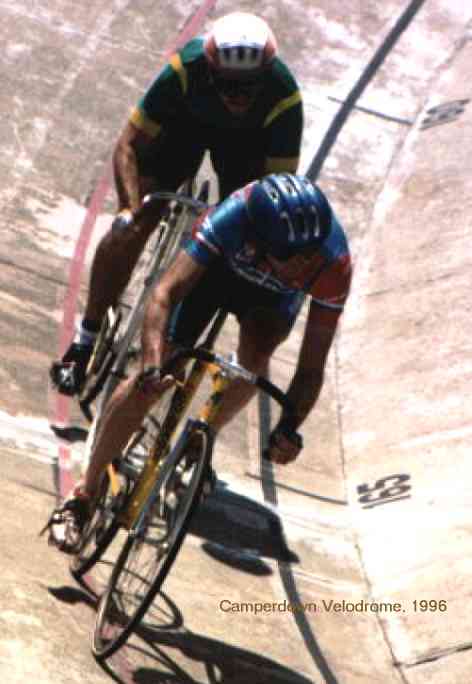You could be forgiven for believing that a $10,000 racing bike is at the cutting edge of what could be achieved with today's technology and materials science, but in fact the UCI, as the governing body for world cycle racing, punishes innovation with tight control over aerodynamics, weight and frame geometry (in pursuit of sporting 'fairness' and consistency). Bikes
could look a lot different, weigh less and slip through the air much more easily, if designers were let off the short leash that is the
UCI's double-triangle standard (just click there and search on 'frame', then come back here). In short, they'd go faster for less effort.
And you could also be forgiven for thinking that bike racers are the first to embrace new ways and materials, when in fact they tend to stick with "what works" when it comes to finishing a long ride. As a group they let
someone else test it out (usually
George Hincapie) and demonstrate a clear, sustainable advantage before jumping on board. It took a relatively long time for the global peloton to embrace clipless pedals, for example, let alone carbon fibre frames (mine dates back to '90, and yes, that's when I finally embraced clipless pedals, too). It's not
just about the cost, or the regulations, it's "tradition" as well. One has to
look like a bike racer, and be 'in the know'. For example you still hear otherwise quite sensible people repeat the mantra that
'steel is real', despite arguably better materials being available for frame-building. And then they pull on their woollen jerseys and tighten their toe clips before riding into the sunset... ahem, maybe not.
So it comes as a bit of a shock to see
RFID transponders, those handy little gadgets that adorn the race bikes of the professsionals, drifting into the admittedly elite end of the local Sydney racing scene. OK, it's the State Crit Championships, but it's still a bit of a jump up from the traditional number on a fabric or vinyl square, attached with safety pins:
ALL RIDERS, PLEASE NOTE THAT TRANSPONDERS WILL BE USED AT THIS EVENT. IT IS YOUR RESPONSIBILITY TO ATTACH YOUR TRANSPONDER IN THE CORRECT POSITION IN ORDER TO BE PLACED IN THIS EVENT. Note that they saw fit to SHOUT about it, 'cause some of those bike riders will be in a state of shock.
We can expect to see similar transponders used more regularly at state open level, gradually drifting down to club level. They remove the need for sharp eyed observers (a hard-to-find resource) and eliminate (I hope) the
'but-I-thought I won it' close-finish dispute. In a big bunch gallop it may be the
only way to truly pick out who won. They are also light, the
widely-used Chip-X being around 15g.
In fact these transponders, also used in warehousing, logistics and on toll roads, by the way, open up a whole world of data collection and analysis. Not just for bike racers but for anyone - or any
thing - involved in circuit racing. You can collect timing data on
every lap for
every participant, for example, and post updates live, either on the web or to a mobile device (like a cell phone). So if you are coaching or managing a team you can see how your charges are going, and perhaps later analyse where they went wrong, without needing to even watch the whole race. (Check out
MyLaps, to see what is already happening.) Of course GPS can do that, too, and you probably have that integrated with your power meters anyway, but as a cheaper option it's not bad. We've already seen how a mix of these types of devices (especially GPS) can be used to plot the course of a road cycling race, too, in real-time, on the Web. You can also easily imagine such a live datastream being used to animate a super-realistic avatar of, say,
Cadel Evans, as he takes on
Lance Armstrong's avatar in a virtual Le Tour, live on screen. It could be the future of live cycling 'vision' on a converged television-Internet platform, without needing the cameras and helicopters, if we wanted it to be... or the basis for a training program, or a game...
So there you go, cycling at the cutting edge. Mind you, it's all been done before. For example
the aviation industry has been using transponders since WWII, although they were somewhat larger, heavier objects at that stage. It just takes a while for these things to shrink, get cheaper, and percolate both down - and sideways. That's innovation.
Labels: innovation, race numbers, RFID











